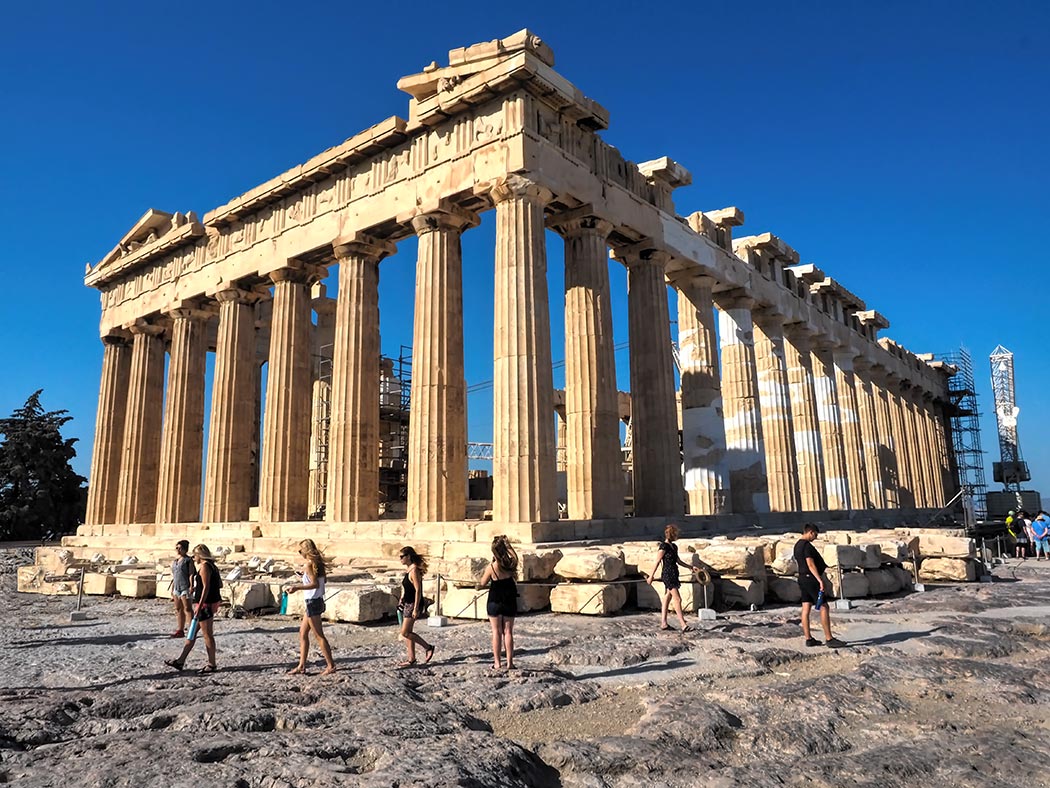The ancient Parthenon, a classic Greek temple to the goddess Athena, perches atop the massive rock outcropping known as the Acropolis. Located in the center of Athens, it is undoubtedly a stunning architectural accomplishment. However some interesting Parthenon facts illustrate the truly unique nature of this temple. First, construction on the structure originally began in 447 BC, nearly 2,500 years ago! The Parthenon served as a classic Greek temple until the fifth century AD, when it became a Christian church. Ottoman Turks seized the entire Acropolis in 1458 and converted it to a mosque, adding a small minaret to one corner. The interior was subsequently destroyed by the Venetians in 1687 during their war with the Turks.
The exterior, which featured 17 fluted Doric marble columns on the north and south sides and seven each on the east and west, survived largely intact. Unfortunately, the same cannot be said for the extensive sculpture and friezes that once adorned the Parthenon. With the permission of the Turkish government, a number of important pieces were removed by a British nobleman at the beginning of the 19th century. He sold them to the British Museum in London, where they still reside.
Restoration work on the columns has been underway for the past 30 years and is not anticipated to be completed until 2020. Work performed during the late 1800’s to the mid 1900’s had been done improperly, resulting in pieces being put together incorrectly. As a result, the restoration team had to take apart nearly every piece of the Parthenon before beginning. They catalogued each piece, noting height, width, slope, corrosion, cracking, stain marks, and even graffiti in order to match the pieces properly. When original pieces could not be found, the team quarried and carved marble from a nearby quarry that was likely the original source for construction materials. To read more about this process, watch the interactive slide show about the restoration process produced by PBS for Nova.
If you enjoyed this article about the Parthenon facts and history, you may also be interested in other stories I have written about Greece:
Santorini Island: An Explosive Past, Present, and Future
Falling in Love with the Fabled Blue and White of Mykonos, Greece
Traveling through 7,000 Years of Greek History with Collette


Wow!! awesome Blog and the best thing is I have found some relevant news on your blog. The collection of amazing pictures is a total add-on. Thanks For it. keep up the good work.
Really appreciate the efforts made to explore the place and portrays the things so amazingly. Thank you so much for sharing the beautiful picture.
Your photos and tips look awesome to me! Appreciate the article and kind words!
Thanks so much Myoky. Happy that you enjoyed my photo and mini-article.